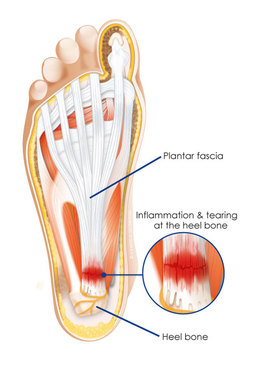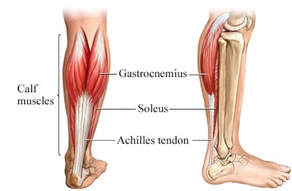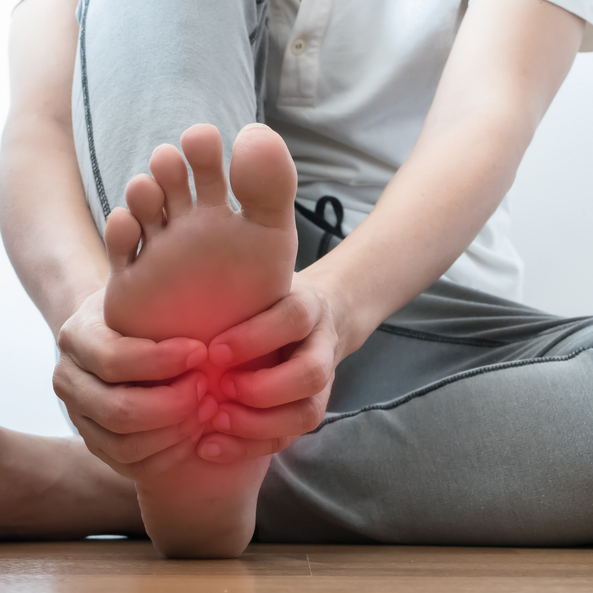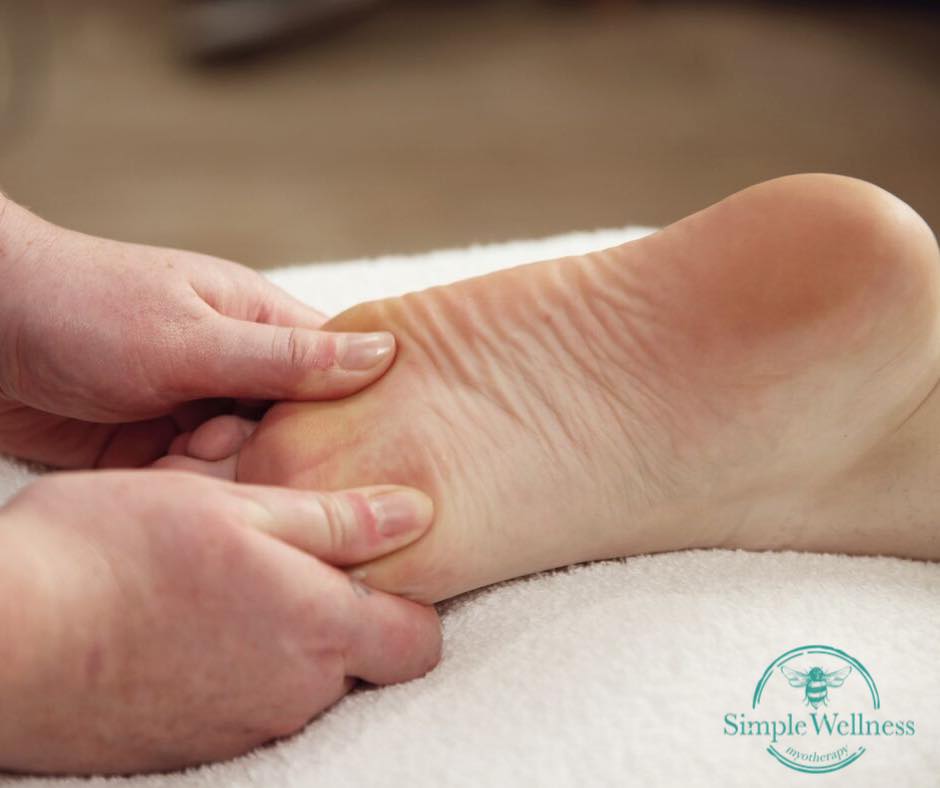|
By Ethan Farr, Sports Myotherapist & Exercise Scientist Plantar Fasciitis is a condition that has piqued my interest as I have also suffered from it and since I have had it I have grown a passion in treating it and fighting it off for good. But what is Plantar Fasciitis? Plantar Fasciitis is a musculoskeletal disorder characterised by heel pain that is exacerbated by weight-bearing activity and after extended periods of rest or sedentary behaviour - but what does this mean in english? Fundamentally Plantar Fasciitis is a long term (comes up repeatedly over a few months) pain at the bottom of the foot this can be heel or arch of the foot. It is worse after sitting or lying down, and it is most commonly felt first thing in the morning when you get up from bed but can be brought on after long periods of walking or standing.
Studies have shown that Plantar Fasciitis affects 10% of adults in their lifetime and is most common in individuals between the ages of 40 and 60 years old, but can affect a younger population of habitual runners or those that are just highly active. Where does it come from/ how do you get it? Plantar Fasciitis is multifactorial but has commonly been linked with; High impact exercise; Obesity; prolonged standing/sitting; flat feet; occupational use of equipment like heavy safety boots; and is highly prevalent in runners. Common practice for the treatment of Plantar Fasciitis includes stretching and exercises for the muscles around the ankle and sole of the foot, as well as using orthotics for the shoes you wear, and potentially using a glucocorticoid injection (Ouch). Did you know that there is another treatment option focusing on pain management making it much easier to do everything you need to do day to day without that constant ache in the feet nagging at you - but what is this miracle cure? Say hello to myofascial dry needling or MDN for short, MDN is a technique used by myotherapists and other healthcare professionals to treat myofascial pain and muscle tightness. It involves inserting acupuncture needles into trigger points (or “knots”) in a muscle to stimulate a healing response and release tension. Not to be confused with acupuncture, which is based on traditional Chinese medicine and focuses on balancing energy flow, MDN targets muscular issues directly, aiming to alleviate pain, improve range of motion, and promote healing. Many studies have supported the notion that MDN can be used in the treatment of Plantar Fasciitis and some studies have found that the use of MDN on the gastrocnemius and soleus (muscles in the calves) had a statistically significant (≥95% of participants experienced improvement) reduction in plantar fascial pain moderate (2 weeks post treatment) to long term (4 weeks post treatment) for most subjects. What does this mean for you? With reduced pain you are able to do the exercise needed to help strengthen and support your ankle and heel meaning if you take an active role post treatment your Plantar Fasciitis may not come back. For others who may not be capable to be more active in their recovery the ability to be pain free for up to 4 weeks is enough and they can seek regular maintenance treatments monthly or bimonthly to control pain. Ready to take the first step towards relief from Plantar Fasciitis? Book your session at Simple Wellness Myotherapy today and experience the transformative benefits of myofascial dry needling. Take charge of your recovery and bid farewell to foot pain for good! Foot and heel pain can really impact your day. It can be a hard area to avoid aggravating through use and movement, for obvious reasons! A very common cause of heel pain is a condition called Plantar Fasciitis. This is an inflammatory condition of the thick connective tissues of the heel and sole of the foot.
The sensation is usually described as a sharp, stabbing feeling directly under the heel. Its generally most painful first thing in the morning, or after resting for some time. Depending on the severity, this can last anywhere from a few moments, to being felt constantly throughout the day. It can be caused by an acute injury or strain to the plantar fascia, and can also develop over time. People who are on their feet for long hours can develop this foot pain, especially if they don't have good supportive footwear. Our bodies are pretty good at finding work arounds to keep us moving, so if you're experiencing plantar fasciitis, you may notice some compensation patterns like limping, reduced ankle mobility, taking smaller steps, or toe walking to avoid pressure to your heel. Short term, these compensation patterns are fine, but if the heel pain becomes chronic then these altered movement patterns can lead to other pains further up the body. What can be done about Plantar Fasciitis?
Do you need help with heel pain? Book in with our team so we can help you with a treatment plan. Does this sound familiar? Terrible pain in your first few steps in the morning. Pain on standing up if you’ve been sitting for a little while. Putting weight on that foot can be agony. You feel it strongest in the heel or arch of your foot. Once you get moving it seems to calm down. If you're saying yes to these symptoms, you could be dealing with a condition called Plantar Fasciitis. Its quite common, and one of the most frequent foot pains that our myotherapists help people with. Plantar Fasciitis is a very painful condition that affects your heel and the sole of your foot. Often the mornings are the worst pain, people often explain they feel like they have to hobble about for the first few minutes of their day.
Usually it affects one foot or the other - some very unfortunate people can get both feet affected at the same time. Symptoms include heel pain; arch pain; altered walking patterns; cramps or spasms in the sole of the foot. Usually the pain reduces after getting moving, but those first few steps can be uncomfortable through to excruciatingly painful. What kinds of treatments work best for Plantar Fasciitis? The techniques I've found that work the best for people with Plantar Fasciitis are:
The hands on treatment sessions are only part of the recovery plan though. Like with most pains or injuries, looking at the way you move and stretch outside of your time in the clinic is important to helping you feel better, quicker. Our therapists will show you some simple but effective movements that help you to stretch your foot and leg to reduce the pain. We can also offer you some temporary pain relief suggestions like ice bottle rolling and using spiky physio balls. Ready to look at a plan for kicking Plantar Fasciitis? Book a 60 Minute Initial Consultation with us. We'll assess your movement and muscle balance, give you a feel-good hands on treatment, and walk you step by step through your treatment plan. Its a Saturday night, and I'm away at the in-laws holiday house for the weekend - studying!! I've just submitted an assessment for my Bachelor degree - a summary on a randomised controlled trial on the effectiveness of Myofascial Release for Chronic Plantar Fasciitis.  This study was published earlier this year (January 2017), and I'm really happy to say that it backs up the way I've been approaching Plantar Fasciitis for years! The study took 30 patients with chronic Plantar Fasciitis and split them into two groups - Group A received 10 Myofascial Release treatments plus a self-stretching program to do at home, and Group B received only the self-stretching program. The group who were receiving the Myofascial Release had work done to the under side (the "plantar" side) of their foot, releasing the fibers of the plantar fascia from the heel towards the toes in long, slow, stretching movements.  The self-stretching program for both groups included stretching both major lower leg muscles - the Gastrocnemius (the bulky calf muscle) and the Soleus (which lays underneath the Gastrocnemius) The study found that both groups showed improvement, however the individuals in Group A who received the hands on Myofascial Release treatment and the self-stretching program showed a significant difference in results than Group B who only received the self-stretching program. When I treat a patient for Plantar Fasciitis, I also include Myofascial Release for the muscles of the legs particular the Gastrocnemius and Soleus, and I also highly recommend a spiky massage ball for home use in addition to the self-stretching routine. Cheryl, one of my patients with Plantar Fasciitis, has this to say about her treatment with me: "I can certainly attest to the treatment's success as you know Mel. Having walked the Camino in Spain in 2014 where I developed plantar fasciitis, I came to you for treatment before going back to do it again in 2016. The thought of walking another 900 kms with PF wasn't appealing but after your treatments and regular daily stretching, I walked successfully without any PF the second time. My hero Mel. p.s. I'm going to Portugal next year to walk the Camino from Lisbon to Santiago. Only 630 kms this time. Hahaha" If you have Plantar Fasciitis, I would love to see you at my new Ferntree Gully clinic to begin a treatment plan that includes Myofascial Release and a stretching program - you can book your first appointment online! Kumar, R., Sarkar, B., Saha, S., & Equebal, A. (2017). Efficacy of Myofascial Release Technique in Chronic Plantar Fasciitis: A Randomized Controlled Trial. Indian Journal of Physiotherapy and Occupational Therapy, January-March 2017, Vol. 11, No. 1 |
Meet Our Team
We have a team of great practitioners available 7 days a week at our Rowville clinic. Archives
July 2024
Categories
All
|
Got a question about Myotherapy?
Contact Mel by phone, email or Facebook
|
Simple Wellness Myotherapy & Remedial Massage Clinic
Shop 12B 150 Kelletts Rd Rowville VIC 3178 |
Phone us on
03 8204 0970 |




 RSS Feed
RSS Feed